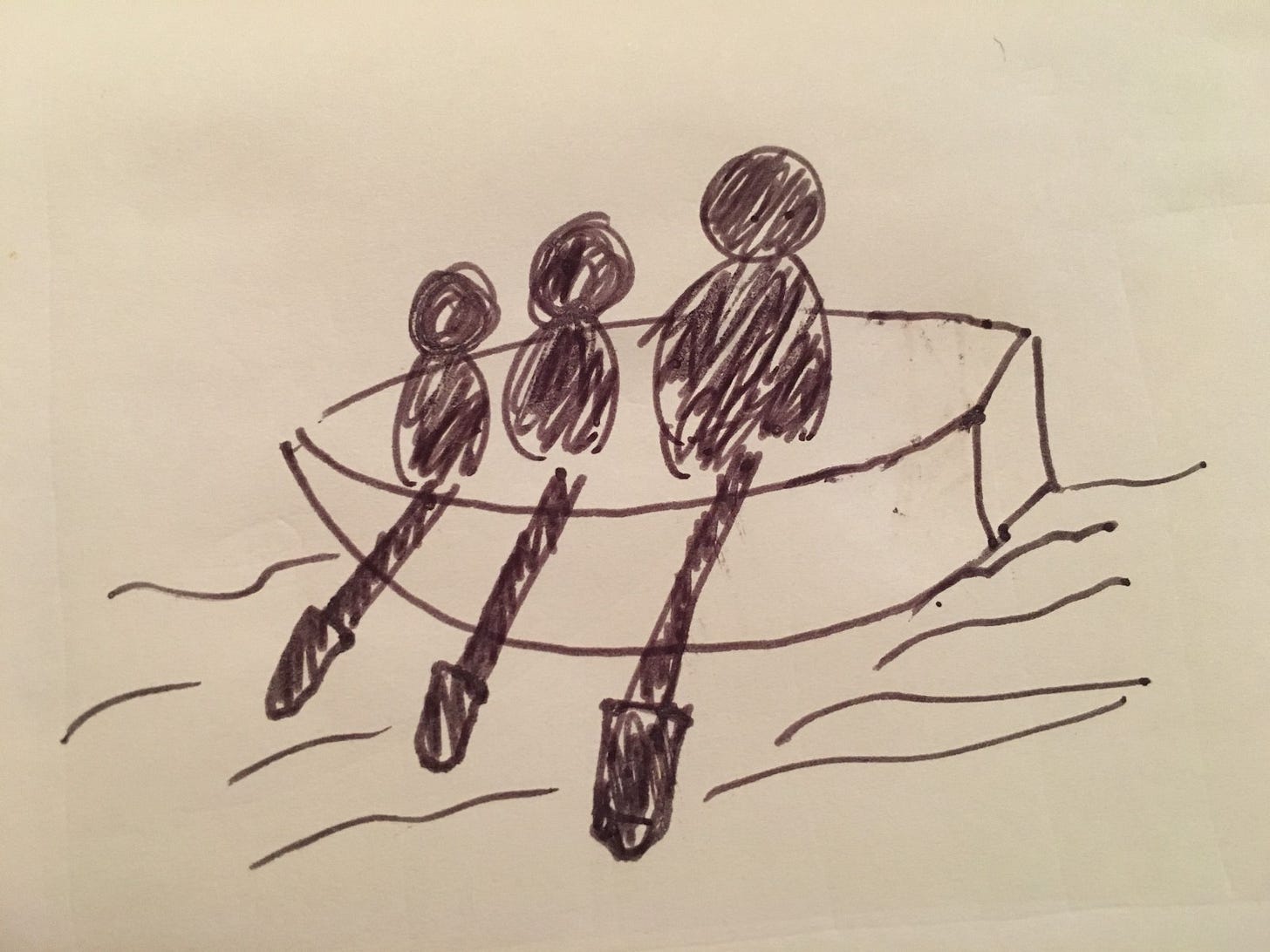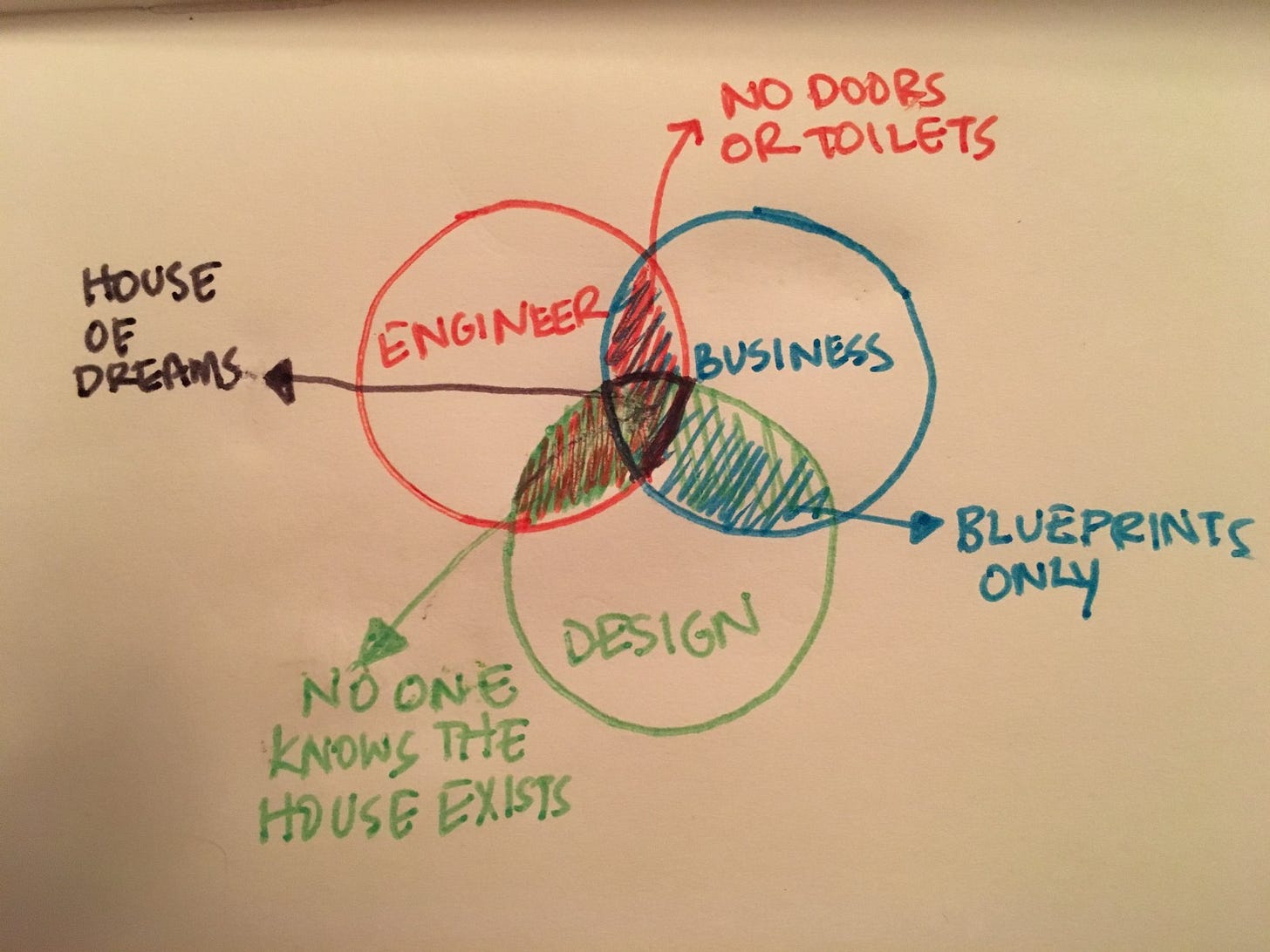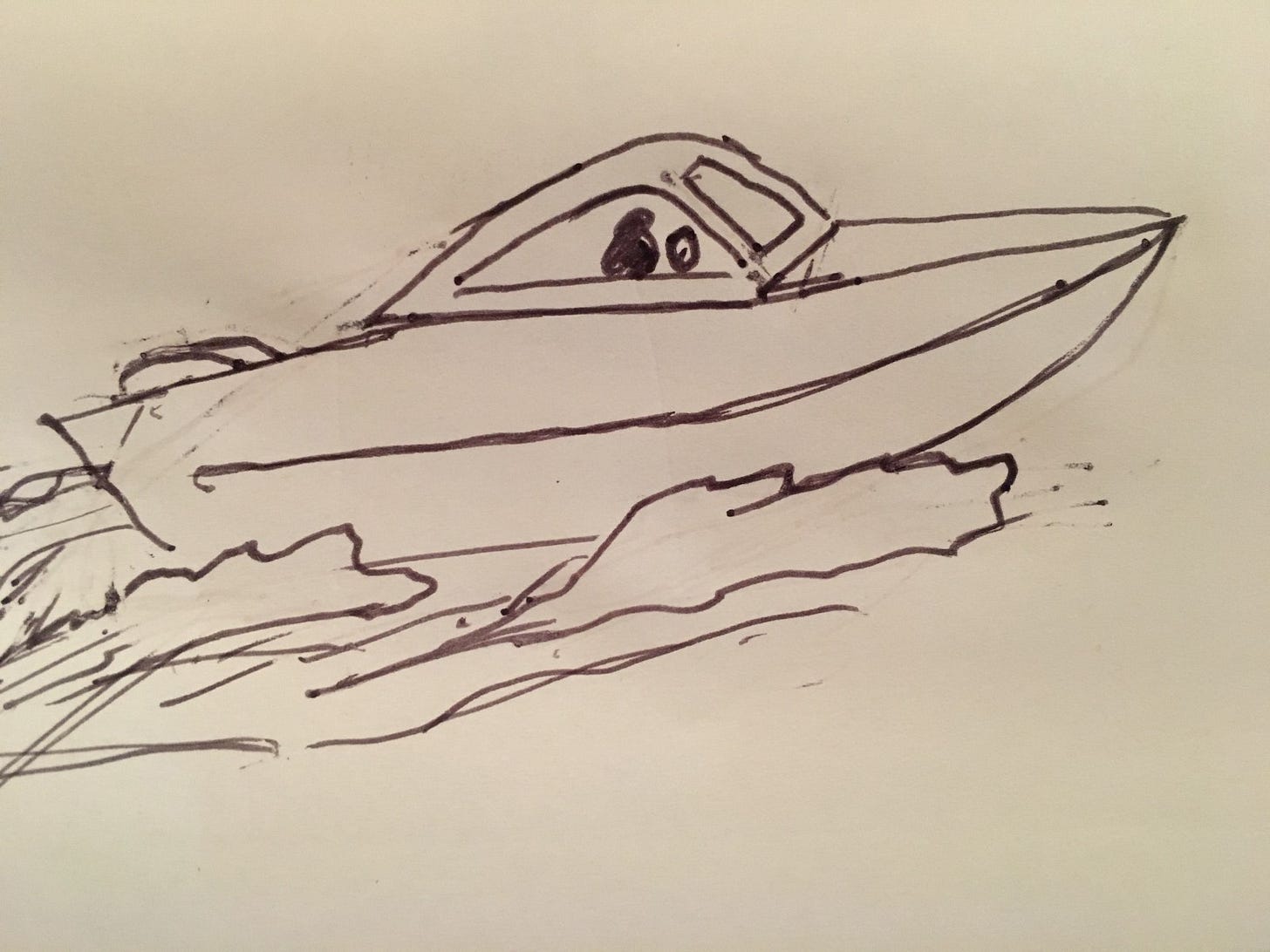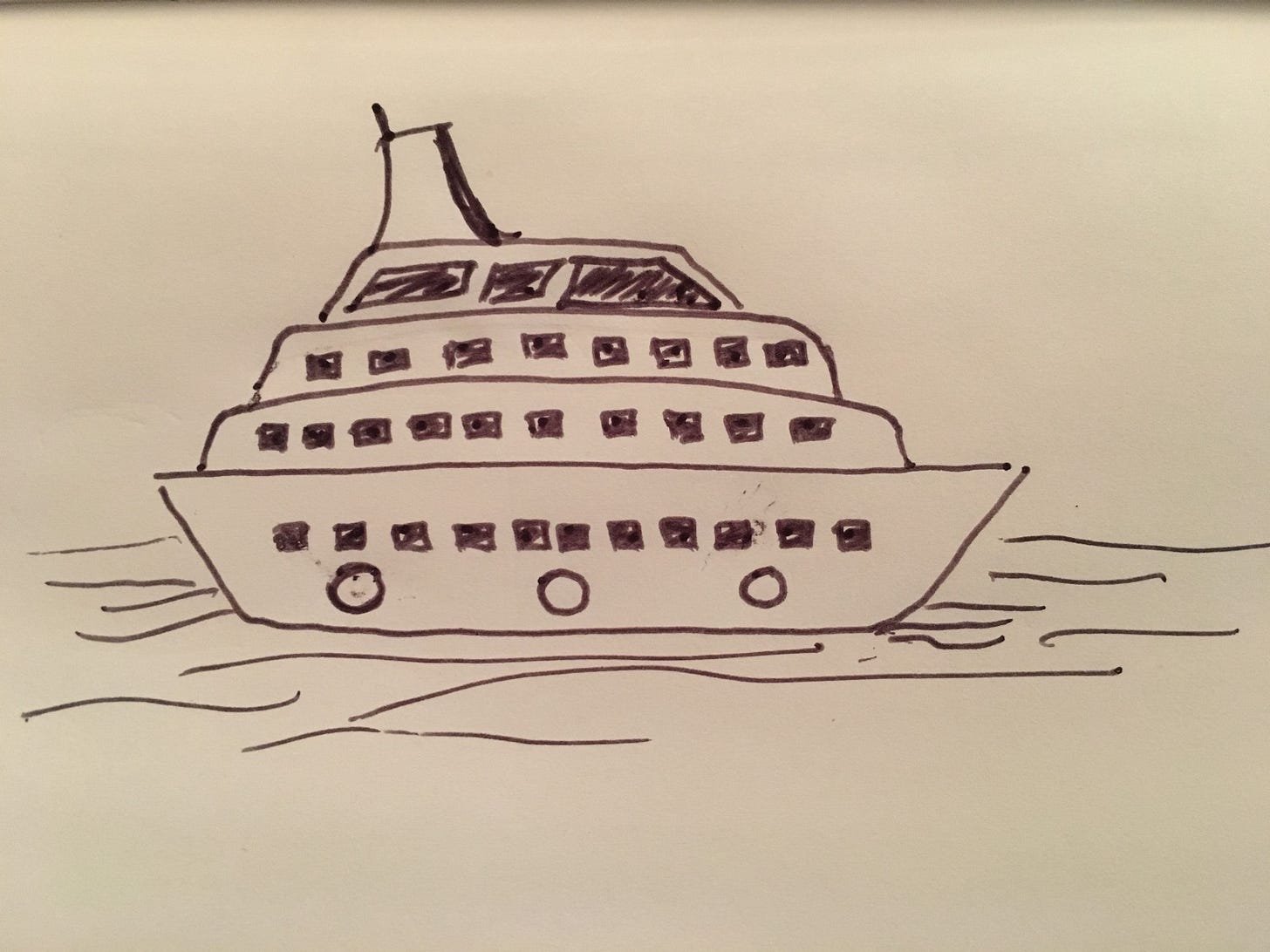Three Types of Teams Your Company Needs as it Grows
Oftentimes in Silicon Valley we talk about how we optimize for the perfect hire. But rarely do we talk about what type of team we are hiring for. In general, there are three stages of a company that needs three types of teams. Knowing what stage you are at can help you better define that team and in turn better define that hire.
The Founding Team (The Row Boat)

The founding team is a special team as a unit and only works as a unit. This is where the team is more important than the founding. One grain of sand between them can cause explosions. The number one reason why startups fail is the founding team.
The type of people that are part of the founding team is a part of a larger whole, but the whole is no larger than a size of a row boat. Therefore, every person aboard that row boat needs to be able to pull their weight as well as each person’s skillset and role needs to be unique. This means that a great founding team has the following qualities in its members:
Generalist, but specialists – Generalists at heart that like to figure things out on their own; however, they are specialists in the sense they have a role within the team for the most part. They are good at one thing, but can “figure out” the other things, not well but good enough.
Diverse, yet complementary – I had a friend who created a company accepted into YC and later had a modest exit to a larger company. Since it was a modest exit he felt like it failed to reach its full potential. When asked what was his failing, he said the skillsets between the founders were too similar. All the co-founders were engineers and that meant other roles needed to move the company forward could not be fulfilled as easily and therefore he felt they could have been more successful had their skillsets been different but complementary.
One day Engineering and Design were having a conversation. Engineering says : “I don’t need anyone, I can build the whole house myself. I am most important” Design says: “What good is building a house if people don’t even know how to use the doors or toilets?”. Business then butted into their conversation, and said: “You are both silly, who would ever come and visit your house if they don’t know you exist? It’s like building a house with no address?” At that point Business, Design and Engineering realized they all needed each other.

The sweet spot of a team is the intersection of business, design and engineering.
Different backgrounds, same values – While many things should be different, the one thing you absolutely need to have the same is same vision and values. Similar vision in that you are building the same thing and values on how to treat each other in the process. One value that the founding team held was that while we had different roles we would respect each other’s area of expertise and they would have the final say when it came to those decisions.
If you notice, each quality is a dichotomy. Being able to hold opposing views and execute amidst those views is a skill that never goes away while building and running a company, but takes many forms as the company matures. However, in the most early stages, each member must be okay with the company working with these dichotomies, as every dichotomy is clearly felt and seen with every ebb and flow of the company.
Row Boat Danger Zone: Fights between the crew can bring going forward to a standstill.
*Please note that the “founding team” extends past the literal founding team. This applies to employees of the company in the early stages, up to around 80 people. I’m looking at all you early employees who were just crazy enough to join us when we had nothing, and help build a billion dollar company.
The Growth Team (Speed Boat)

As the company grows (+80 people), the company begins to go through the growth phase. It may have felt like the company was growing before, but past about 80 people you begin to feel a shift. Every new person you add, you have a harder time remembering their names, projects or what they work on. These people begin to be okay with reporting to people and want to know the boundaries versus “figuring it out”, but are highly ambitious and excited about the momentum, so they want control of distinct areas. They are okay being a part of a whole, but not be a rower. They will identify strongly with their team.
These people get excited that there is momentum enough to propel a speedboat and they want to be on it. They aren’t sure where it is going, but as long as the direction is forward, that is what fuels them. These people are the type of people that are on the speedboat and as they take off they notice an engine is missing and they get excited because they get to build their own engine while the boat is moving. People who do well at this stage have the following qualities:
Specialist-generalists - The company begins to hire its first CMO, COO, VP of Engineering, VP of HR - basically executives from the outside that are specialists. They are specialists first and then generalists. They are to help “scale”. However, this phase is tricky. Get someone who is too far away from building they fail horribly, get someone too close to building, they cannot help the company manage a team or grow.
Improvisation - People that join during this stage love improvising at a larger scale. They may not build the best data center; however, they will do a decent first run given resource constraints. You will have enough money to get the folks who have specialized in their field but may not be the most experienced. They tend to have a career ahead of them and see this experience as a great addition to their career – in many ways a stepping stone. This is not a bad intersection of personal and company goals, just make sure they do not do it at the risk of the company.
Right now vs. right – If given a choice these people will tend to lean towards “right now” vs “right”. They will make “right” choices; however, the speed at which they are going will allow the “right now” choice to be the “right” choice.
For these people when on the battlefield, performing a tracheotomy with pen, rather than with the proper instruments, is the “right now” thing that becomes the “right” thing given the conditions.
It is important that the leadership be great at recognizing the growth opportunities but not at the sake of destroying long term value. Thus it becomes even more important to hire people with the same values and vision as the company. Not only does it get all these people on the same page faster, it also allows the company as a whole to be agile and respond to opportunities and challenges quickly.
Like riding in a speedboat, this is the bumpiest stage of a company as not only does it has momentum but also a lot of people trying to “figure it out”. Most people attracted to a speed are ambitious young people with their careers ahead of them. Building infrastructure with these type of people can be good, but they must be trusted to be doing what is best for the company rather than their careers. Therefore, building systems in place to measure and gather feedback from a people structure standpoint becomes critical.
Note: Transitioning the generalist-specialists of the “Founding Team” phase can be difficult during this time. Helping these people transition can add a stronger foundation to a long lasting culture as well as root out people who came just because the company was growing versus building a great company.
Speed Boat Danger Zone: Sometimes slow is faster. Pivoting smartly can get to your destination, but pivoting too much will drive your company in circles.
The Scale Team (The Yacht)

As the company has found its competitive advantage and has found a successful business model, the team begins to look differently. By now the company has more than one location, and even Project Managers have become a function within the team! Oftentimes at this stage you notice how much more those who build companies and those who run companies diverge.
This phase is much like moving a yacht forward. A group of specialists working together to move the machine forward. The communication systems and habits of a yacht are very sophisticated. Processes ensure safety of crew and passengers and are ran over and over again. There are a lot more resources but then again there is a larger responsibility. This is not to say there aren’t any tweaks or major updates, but there are updates (for the most part) rather than building something from scratch. There may be new processes or infrastructure, but it is used to connect and improve existing processes.
People who do well at this stage have the following qualities:
Specialist-Connectors – These people are specialists through and through. However, they are able to connect across disparate groups and locations. These people are great at running an existing structure and making it better. They are good at managing groups of people across departments and connecting them.
Communicators – As the company matures and gets larger, communication becomes key to making sure processes move efficiently and effectively. It is these processes working together that help the boat move forward. In fact, long gone are the rowboat days where your paddle can move the whole boat forward, it is much better to get the right team to turn the motor to get the boat moving. Imagine using a paddle and 10 people to move a whole yacht forward, not much would happen.
Refiners – These people tend to refine an existing system and process. They can also run a an existing process quite well. Now the “right” thing is no longer the “right now” thing. This is because your business has matured to a point of a lot of customers and stable revenue stream. Doing something “right now” versus “right” can cause large irreversible damage.
By now the organization has probably made and acquisition or two. They have become more familiar with who they are and can integrate but can do better. At this stage the entire company is in refinement. Markets probably have stopped growing. The company starts to expand the business into other markets, but by now the company has the core business model well formed and they are in refinement of this model through better measurement of the business.
Yacht Danger Zone: Moving or standing still, if you are on a yacht you cannot feel it. Big mature companies die slowly and sometimes it is too late before the company realizes it is dying.
Conclusion
So, before you hire, you should it’s important on who you need to hire. To figure that out, it’s best to figure out what phase your company is in.
☞ If you would like to hear more tales, hit the Follow button below.
☞ If you are interested in a particular topic to do with our journey that you think is “important shit”, please leave a response below!
☞ Follow me on Twitter @hollyhliu
I am the co-founder and Chief Development Officer of Kabam, these perspectives are my own and do not necessarily represent Kabam.

